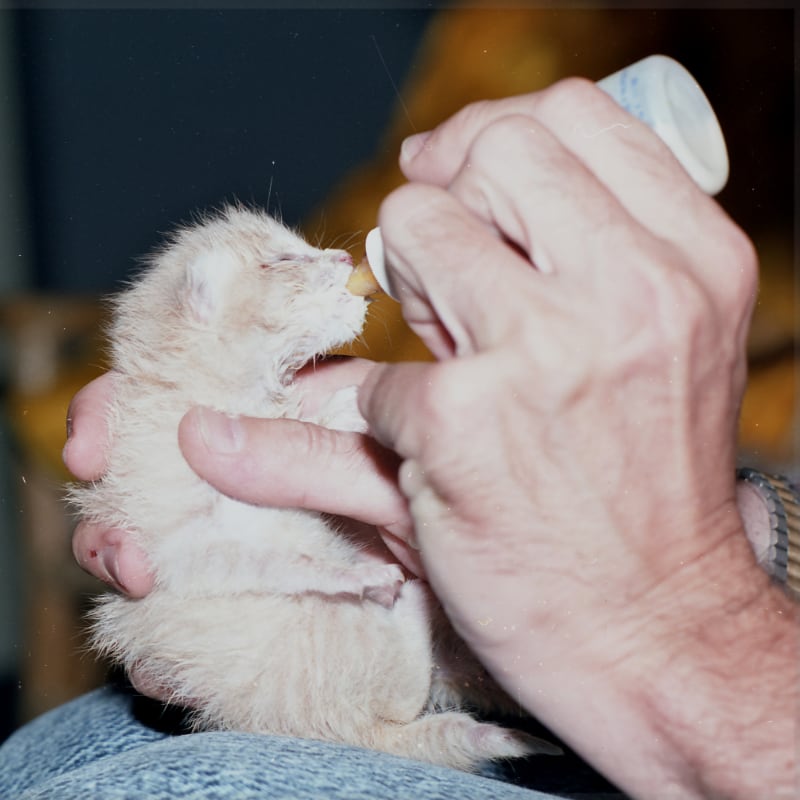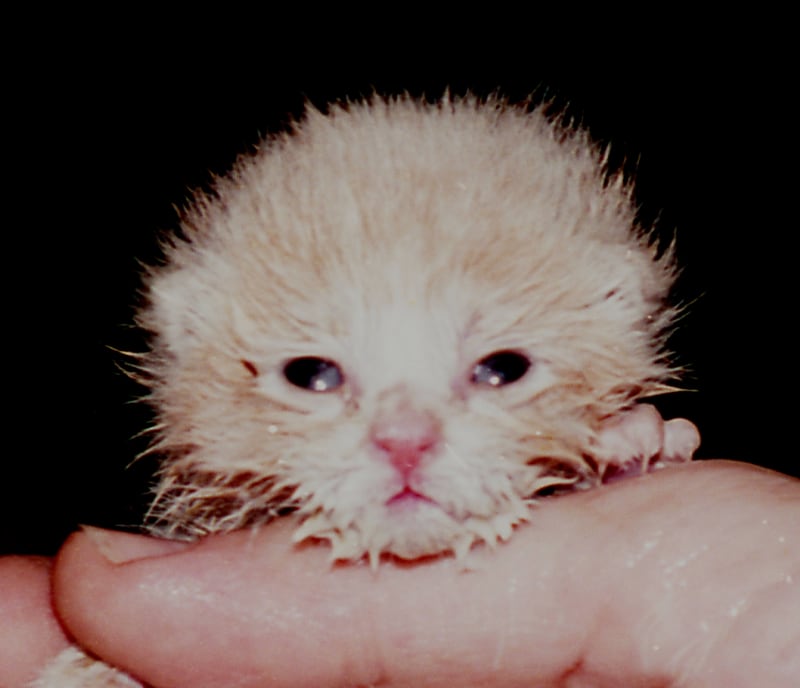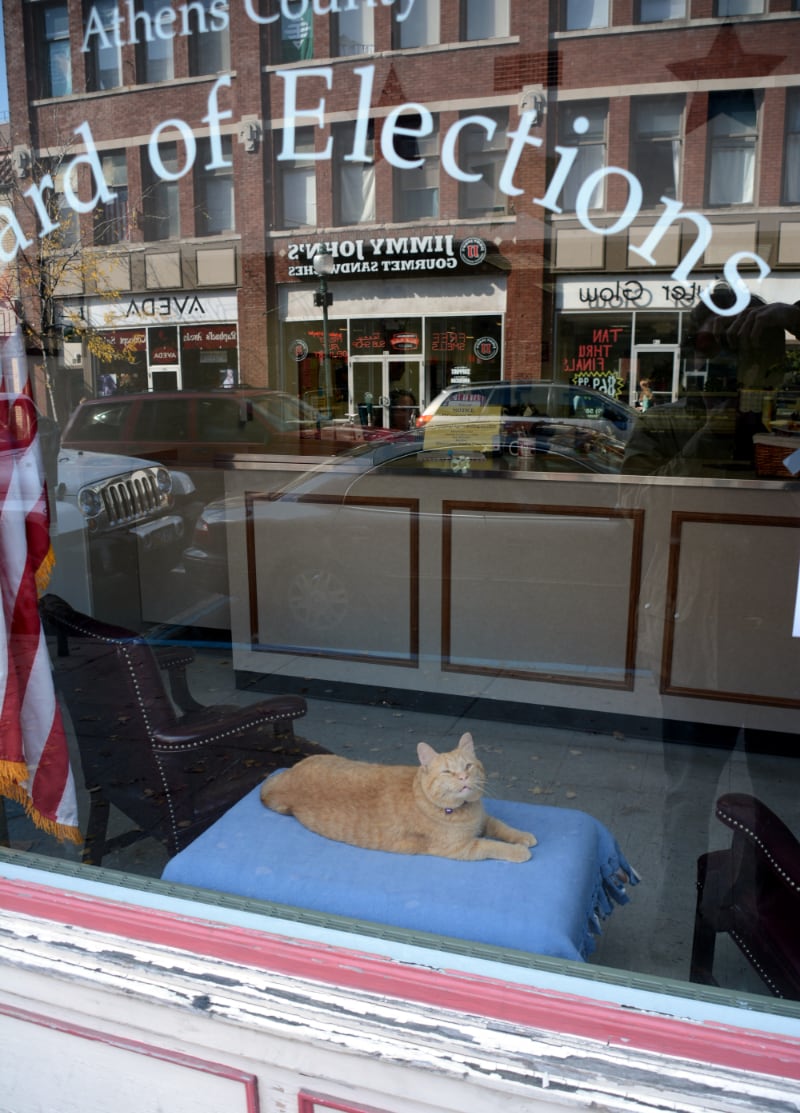
A close friend of mine — we’ve never met nor heard each other’s voices, but hey, this is the twenty-first century — is devoted to cats.
She has spent hundreds and hundreds of hours over the last seven years seeking the availability of a drug that would save millions of her feline friends from painful almost-certain death. We’ll talk more about that in a bit.
The only time I ever saw one of my best friends cry was the day his 20-year-old, very fat cat had to make that final trip to the veterinarian. I knew him when his mother died and years later when his father died. It was his childhood cat that drew tears in my presence.
There is something about cats.
It may be more than Toxoplasma gondii — and with that mention I may have now lost two friends — the cat-borne parasite that draws us to cats. I feel fairly confident that I am not infected, but I’ve never been tested for it so who knows? Yet I find something appealing about many cats. How else, except for the girlfriend who thought it was adorable and who looked at me pleadingly, might I explain my reaction to the tiny kitten, its eyes not yet open and its tail broken, that we found outside her grandmother’s house in Queens, New York, on May 1, 1994? The tiny thing was howling in alarm well above its weight, so it was named “Mayday.” This led to weeks of my getting up twice each night for feeding, and having to rub its belly to make it poop. (Mother cats do this with their tongues. There are lines I will not cross, not for cute kittens and not even for cute girlfriends.) I’d then have to wipe its little cat bottom with a Q-Tip. (Q-Tips, Inc., may be an inadvertent part of the cat-mind-control conspiracy.)
Mayday lived.

We had cats, by which I mean a cat and at that time having a cat meant having cats, plural, on our little farm when I was growing up. The marmalade Pittipat, named from a poem that was a favorite of my grandmother and sisters, was our only official cat. She was an outdoors cat, especially fond of the barn. She was also fond of visiting gentleman cats, which were called “traveling salesmen” in our part of the world, so from time to time the search was on to find the new litter of kittens. This was an important event, in the world of children’s politics, with the child who found the kittens possessing a certain amount of power in that that child knew where they were and the rest of us didn’t. The secret wasn’t kept for long, and it was exciting to learn which colors this batch would turn out to be. After a while it came time to find homes for the new kittens, which was sometimes easy but not always. One time with the audacity known only to a child, I put all the kittens in a cardboard box, asked my grandfather to drive me to the television station (KOMU, channel 8, if you’re keeping score), where Captain Bob’s “Popeye Time” kids show was underway. Surprisingly, my grandfather did it. I marched into the TV station, and Captain Bob put me and the kittens on the air. I announced our telephone number — imagine any of this today! — and by the time I got home the kittens all had new homes.
There is a tremendous issue, here and abroad, in cities and the countryside, of feral cats. In some places it has taken a toll on wildlife, with a reduction in songbirds and other small animals. The vermin populations in cities would probably be worse but for the presence of feral cats — though this has probably led to smarter rats and mice, too, at least until they contract aforementioned Toxoplasma gondii. It does not take many generations for house cats to become feral, effectively non-native wild animals that look like housecats.

My friend’s family was not wealthy, but she took her first job primarily so she would have money to spend on food for the neighborhood cats.
Not all feral cats revert to wildness. Cats far outnumber people on Japan’s Cat Island, where thousands of visitors come (of course they do; cats are held in very high esteem in Japan) to see the cats. Yet those cats behave more nicely than the cats we often see on the woods and on the sidewalks here.
Feral cats are not a new problem, as any examination of old cartoons will demonstrate. These usually feature cats singing at the top of their lungs, with the angry apartment dweller, kept awake, throwing something at them. (Which for some reason is usually a boot or a flower pot.)
Where I live, and I suppose it is true of other college towns, university students who on average possess the same intelligence and half the sense of an earthworm, adopt cats and dogs and then, at year’s end, turn them loose. Some drive them into the countryside. Others just open the door and toss them out. They — did I mention that they are idiots? — think that cats and dogs are wild animals.
One such cat has become famous. Two of the lovely ladies at the Athens County, Ohio, Board of Elections one day several years ago heard a girl and a boy arguing in the alleyway behind the office. Investigating, they learned that the couple were getting rid of their cat via abandonment. The weeping girl didn’t want to do this, but the angry boy insisted. The nice ladies thought a minute and came up with a solution, and Pumpkin the cat has lived at the Athens County Board of Elections ever since. You’ll often see a small crowd gathered to gaze at Pumpkin as it sleeps in the sun inside the big plate-glass window. The board even made a poster featuring Pumpkin, which quickly sold out.
So, yes, cats.

My passionately cat-loving friend is angry. Let me tell you about it.
There is a disease called Feline Infectious Peritonitis, or FIP, found among cats. It is not common, but it is not rare, either. For most cats who contract it, it is fatal. It is caused by a corona virus.
Research has long been underway to find an effective treatment or cure for FIP. Good, no great, progress was made. The leader in the research has been the University of California at Davis, headed by Professor Emeritus Niels Pedersen. He and his crew found that a drug called GS-441524 was highly, almost astonishingly, effective in curing the disease. A cure was in sight.
Then along came another corona virus. You may have heard of it. It is known as SARS-CoV-2. All eyes turned toward that microbe and the government billions a cure would bring. (Or, actually, just about anything pretending to be a cure — the politics of the situation demanded that something be done; it didn’t have to work.) No company was interested in developing and marketing a cure for some cat disease.
GS-441524 had been formulated by the pharmaceutical company Gilead Sciences, Inc. which now turned its attention to a related drug you may have heard of called remdesivir. You might have heard of it because it is the only pharmaceutical product so far that seems to actually treat COVID-19, the disease caused by SARS-CoV-2. It is the only pharmaceutical product approved by the U.S. Food and Drug Administration for treatment of COVID-19. It received “emergency” authorization from the FDA but appears to work, anyway. It is a variation on the GS-441524 recipe.
The pandemic has been more or less declared over, with neither side winning. The pharmaceutical companies must look for other things to do. It apparently will take a while to wean them off the government teat. Now they will have to make things that work, unlike the SARS-CoV-2 vaccines, and they won’t be paid as much to do it.
Unlike the “emergency” approvals during the pandemic, when the standard was “this might work; we gave it to a few people who are mostly still alive, so far,” the FDA’s standard approval process is criminally slow and bloated, with no particular effect on the quality of pharmaceutical products but with a marked effect on the career prospects of people who work at the FDA. I know of a safe, effective antibiotic product that the FDA’s “expert” panel failed to approve because, apparently, some of the panel members didn’t like their lunch. This is not a joke. It effectively bankrupted the company that developed it. The process is hugely expensive: it can cost a company a half-billion dollars to usher a product through FDA approval. Some of this money might be spent on research. The high price tag makes sure that only big, wealthy, established firms can play. The FDA wants you to believe that it is painstaking. What, then, about the swine flu vaccine? What about the many other drugs that received FDA approval without being safe and effective? When it comes to determining whether a pharmaceutical product is any good, FDA approval is several notches below a papal blessing — even with the current pope.
Products to treat animal diseases have to undergo the same approval. This usually follows clinical trials, which are done in stages. UC-Davis did trials of GS-441534, treating cats suffering from FIP. It is now doing clinical trials, also with excellent results, treating FIP-infected cats by using remdesivir. Notes a 2020 status report: “Recently, antiviral studies investigating the broad-spectrum coronavirus protease inhibitor, GC376, and the adenosine nucleoside analogue GS-441524, have resulted in increased survival rates and clinical cure in many patients. However, prescriber access to these antiviral therapies is currently problematic as they have not yet obtained registration for veterinary use.” Will Gilead pony up millions and millions of dollars to get the drugs approved? If so, how will they recover their investment?
It’s unknown, but remdesivir for humans is expensive, not as expensive as some exotic pharmaceuticals, but expensive, at more than $3,000 per patient. It is likely to cost cat owners a lot, too.
Which I imagine they will pay. People love their cats. Remember my friend who remained dry-eyed at his mother’s death but wept when his cat was put down? I have no doubt that my passionate cat-loving friend, outside a burning building containing a cat and an unconscious me, would shout to the firemen to save the cat. (It’s not just cats: the girlfriend who urged me to take in little Mayday spent more than $10,000 to have her miserable little dog put back together after it tried unsuccessfully to stop a UPS truck.)
So cat owners resort to counterfeit GS-441524 imported from China at $1,000 or more. It is sketchy and illegal, but at least some cat owners report it works.
Maybe if Gilead gets its drug approved it will at least force the Chinese to lower their price.
Cat owners will pay it. Because . . . cats.

Dennis E. Powell is crackpot-at-large at Open for Business. Powell was a reporter in New York and elsewhere before moving to Ohio, where he has (mostly) recovered. You can reach him at dep@drippingwithirony.com.
You need to be logged in if you wish to comment on this article. Sign in or sign up here.
Start the Conversation